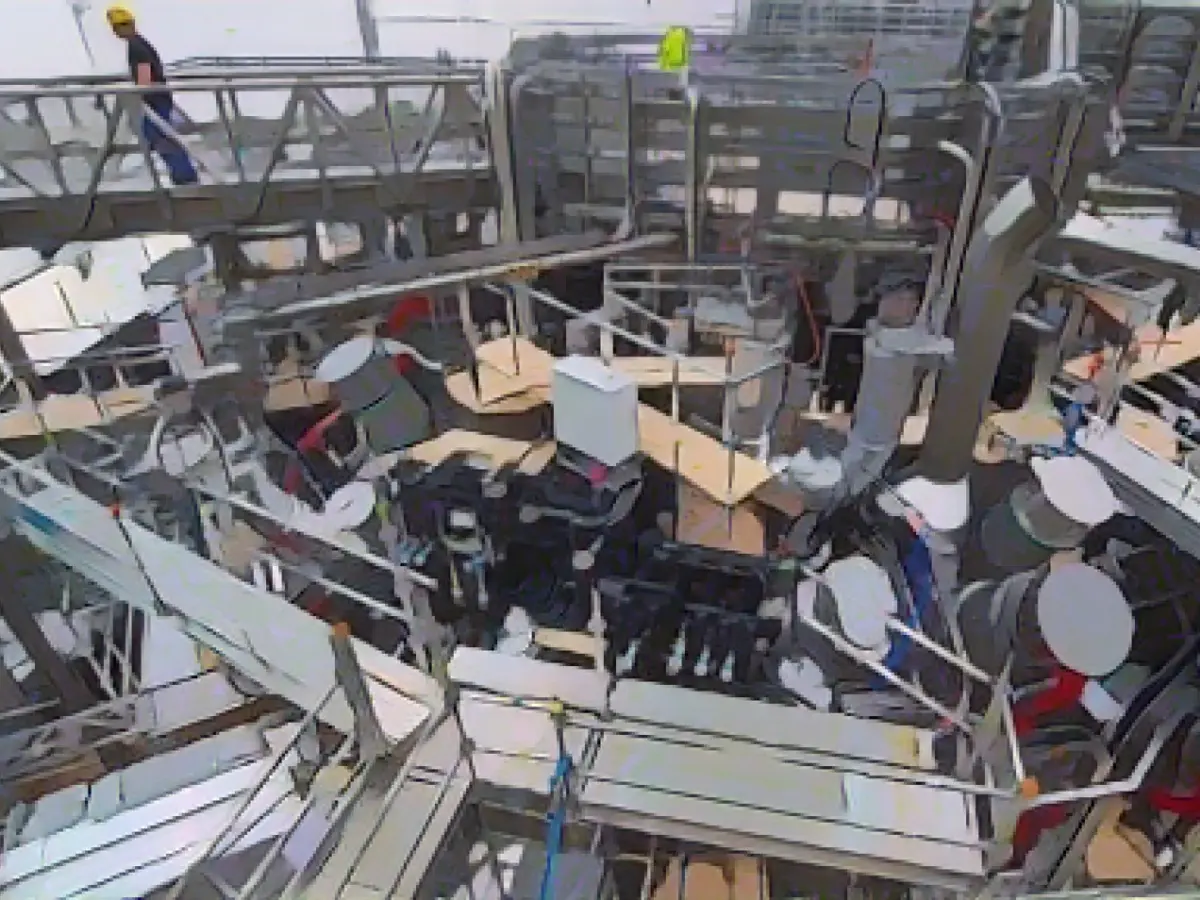Nuclear Fusion: A Promise on the Horizon or Just Another Unfulfilled Dream?
The prospect of harnessing the energy from nuclear fusion, reminiscent of a Sci-fi movie plot, has captivated the world's imagination for decades. In a major breakthrough announced last December, US researchers managed to fuse atomic nuclei, generating more energy than they had put into the system using lasers. Jennifer Granholm, the US Energy Secretary, hailed this as "one of the most impressive scientific achievements of the 21st century."
This groundbreaking development has not gone unnoticed in Germany, which recently pledged over one billion euros for fusion research over the next five years. Thomas Klinger, the head of the "Wendelstein 7-X" fusion experiment near Greifswald, is thrilled by the progress made in fusion research - progress that he believes dispels the notion that nuclear fusion is nothing more than a pipe dream.
Yet, for all the excitement and investment, nuclear fusion remains an elusive dream, despite decades of research. Unlike traditional nuclear fission, which generates energy from splitting atoms, nuclear fusion involves the fusion of atomic nuclei at extreme temperatures, a process that occurs naturally in stars, including our sun. By harnessing this power, scientists could potentially generate enormous amounts of energy in a climate-neutral manner, without the risk of a catastrophic reactor failure or the production of long-lasting, highly radioactive waste.
Markus Roth, a researcher from the Technical University of Darmstadt, likens the quest to create a fusion power plant on Earth to "artificially creating a star, keeping it alive, and milking it for energy." And while the prospect of nuclear fusion has fascinated humans for centuries, Roth points out that if it were as simple as rocket science, it would have been achieved long ago.
In the US experiment, the energy balance pertained only to the plasma itself, not to the overall balance. For future electricity generation, it is crucial that this overall balance is positive, which is still far from being the case. According to the data provided, the system required around 300 megajoules of energy to supply two megajoules of laser energy, which generated three megajoules of fusion yield. Notably, the energy generated is thermal, leading to significant losses when converted into electricity.
Nevertheless, efforts to make nuclear fusion a viable energy source are underway. German-American start-up Focused Energy, co-founded by Roth, is one such initiative that seeks to make laser fusion a reality. The company, which has attracted private investment in the billions, is confident that nuclear fusion can be transformed from a dream into a reality.
However, Claudia Kemfert, an energy expert from the German Institute for Economic Research, questions the promises of nuclear fusion, arguing that they are more akin to wishful thinking. She maintains that more established technologies, such as renewable energies, are currently more affordable and effective at providing a full energy supply.
Despite the challenges, nuclear fusion remains a tantalizing prospect, with some experts believing that the first fusion power plant could be operational by the mid-21st century. Thomas Klinger, for one, remains optimistic, acknowledging that it's a difficult task but, he maintains, "that's the best a scientists can say."
Fusion Research Milestones and Perspectives
Recent advancements in nuclear fusion research have been noteworthy:
China's "Artificial Sun": China's Experimental Advanced Superconducting Tokamak (EAST) has recently set a new record by maintaining a steady, highly confined plasma loop for 1,066 seconds - more than doubling its previous best of 403 seconds.
WEST Machine: The WEST machine, located in France, has broken the world record for plasma duration, demonstrating the potential of magnetic confinement fusion. This technology could pave the way for future energy production.
ITER Project: The International Thermonuclear Experimental Reactor (ITER) is being built in southern France, with the goal of achieving sustained fusion for research purposes. It is expected to be operational by 2039.
Expert Opinions and Challenges
Despite the progress, several challenges remain within the realm of nuclear fusion, including safety and efficiency issues, economic feasibility concerns, and scalability challenges. Experts urge continued research and development in these areas to realize the full potential of nuclear fusion as a sustainable energy source.
Future Prospects
Undeterred by the challenges, researchers and entrepreneurs are making strides in the development of fusion pilot plants, such as the one being pursued by General Fusion in the UK. These initiatives key to resolving critical-path scientific and technical issues and paving the way for a fleet of commercial fusion power plants by the 2030s.
In conclusion, while nuclear fusion represents tremendous potential, its realization as a viable energy source remains a complex challenge that requires ongoing research and development efforts. Nevertheless, with perseverance and innovation, science and technology may soon bring this tantalizing dream within reach.




